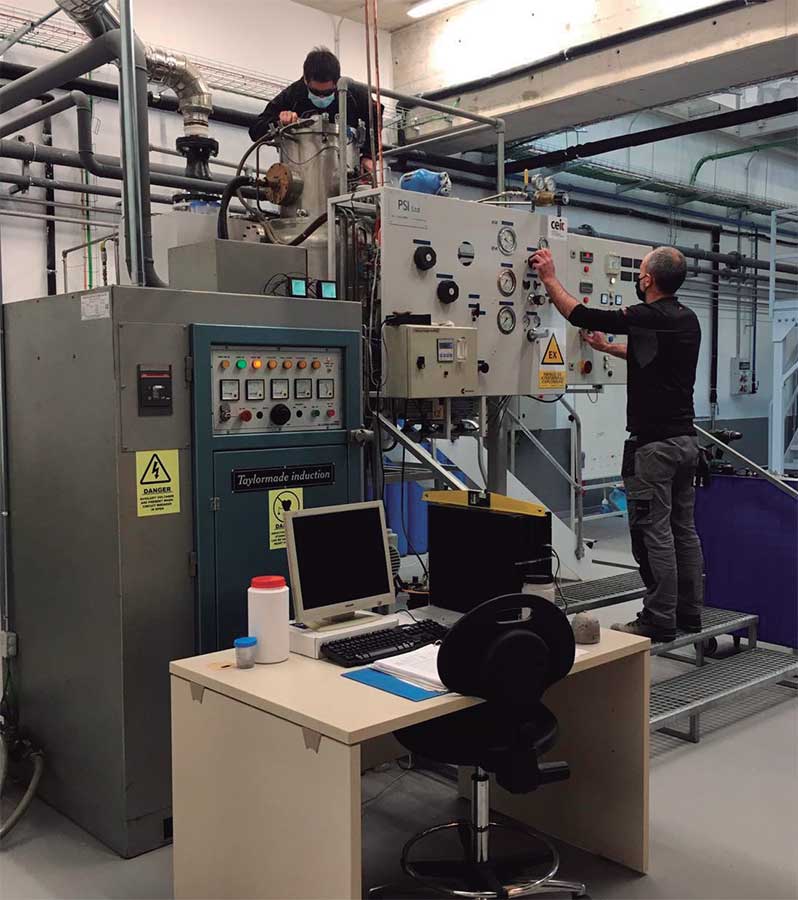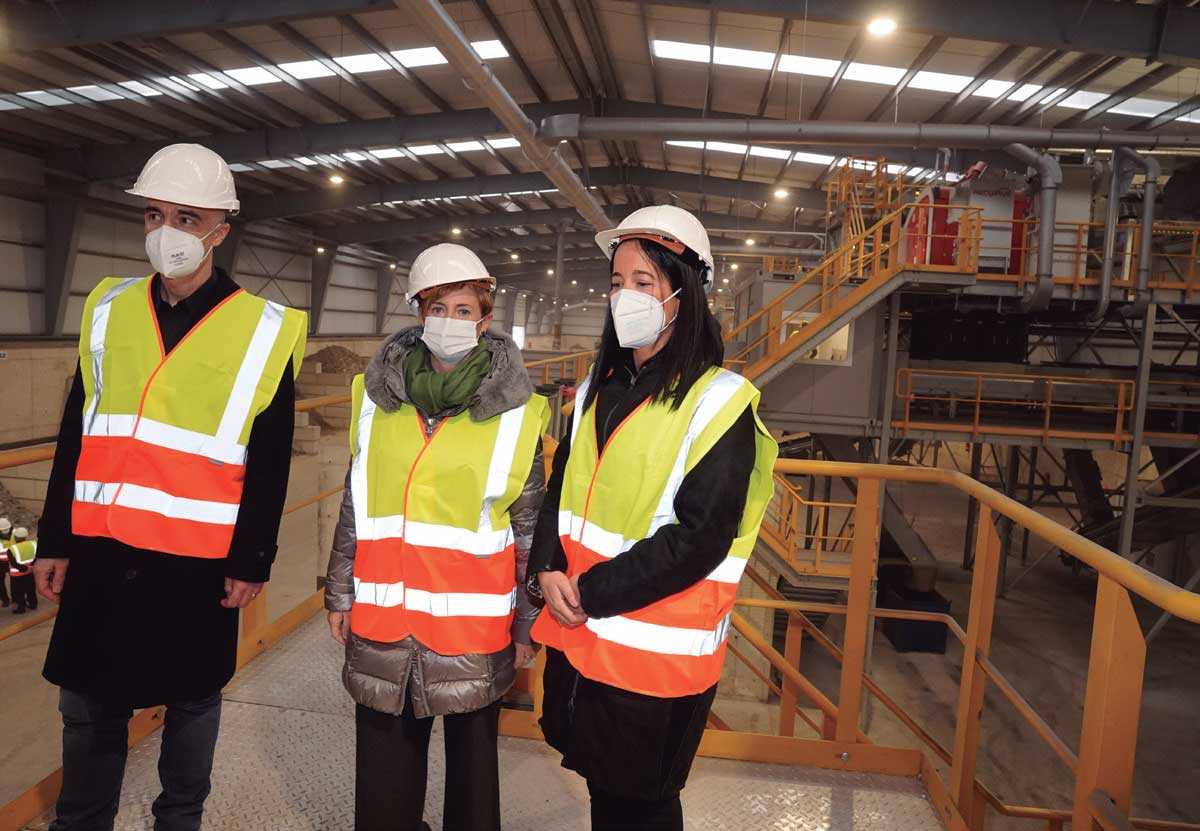SEPMANREC
AUTOMATED SEPARATION OF SINTERED NdFeB MAGNETS TO BE RECYCLED AS BONDED MAGNETS
THANKS TO PREVIOUS MAGNET RECYCLING PROJECTS and close cooperation with companies in the value chain, one of the key issues regarding the performance and continuity of this activity was identified as the need for an automated system to separate magnets from the rest of the ferrous scrap (casing, electrical steel, etc.). At present, this separation is not carried out: magnetic materials are treated together with the rest of ferrous scrap and sent to steel mills where scrap and other raw materials, necessary to obtain the desired chemical composition, are melted down. During this process within steel plants, where the material received is melted down, rare earths, due to their affinity with oxygen, oxidise and form part of the waste slag. The SEPMANREC project, a sequel to a previous project (FABRIMANREC), focuses on the needs and concerns of the industrial sector in this area.
STADLER is dedicated to the design and manufacture of metal parts by powder metal pressing technology, and has relied on the CEIT Technology Centre and the Otua Group organisations REYDESA and INATEC for the SEPMANREC project.

 OBJECTIVES
OBJECTIVES
- Develop an automated separation process for sintered NdFeB magnets from the rest of the electricalelectronic scrap that is treated in recycling plants.
- Study the recycling processes currently used: separation of material sources, shredding, sorting materials according to differentiated properties.
- Study separation methodologies that allow separating ferrous materials destined for steelworks from magnetic materials.
- Adapt the separation methodology to material recovery processes currently implemented in recycling plants.
- Classify the NdFeB permanent magnets obtained.
- Demonstrate the feasibility of recycled material in new machines of the companies contacted in the industry focus group.
 RESULTS
RESULTS
- REYDESA has implemented different methods of separation and concentration of magnetic material within the plant’s current separation lines.
- CEIT has treated synthetic mixtures of scrap and magnets with quantities similar to those expected in a normal flux starting from 2% concentration, and reaching magnet concentrations of up to 85% today.
- The recycled magnets are comparable to those obtained with fresh powder. Prototype magnets bound from recycled material can be produced industrially for use in commercial equipment.
 CONCLUSIONS
CONCLUSIONS
- Separation of the scrap according to the grade of NdFeB permanent magnet it contains is not possible; therefore, it is necessary to sort them into batches of recycled material, once separated.
- Thanks to SEPMANREC, ensuring greater resilience in supply chains is possible, by implementing separation processes that are not currently conducted in the Basque Country.
- Among the most suitable techniques for separation that have been studied, those that can be implemented in an established industrial recycling process will be developed, generating the knowledge and technology necessary to complete the value chain.
ENVIRONMENTAL
TECHNICAL
ECONOMIC
COMMERCIAL
ON THE MARKET






